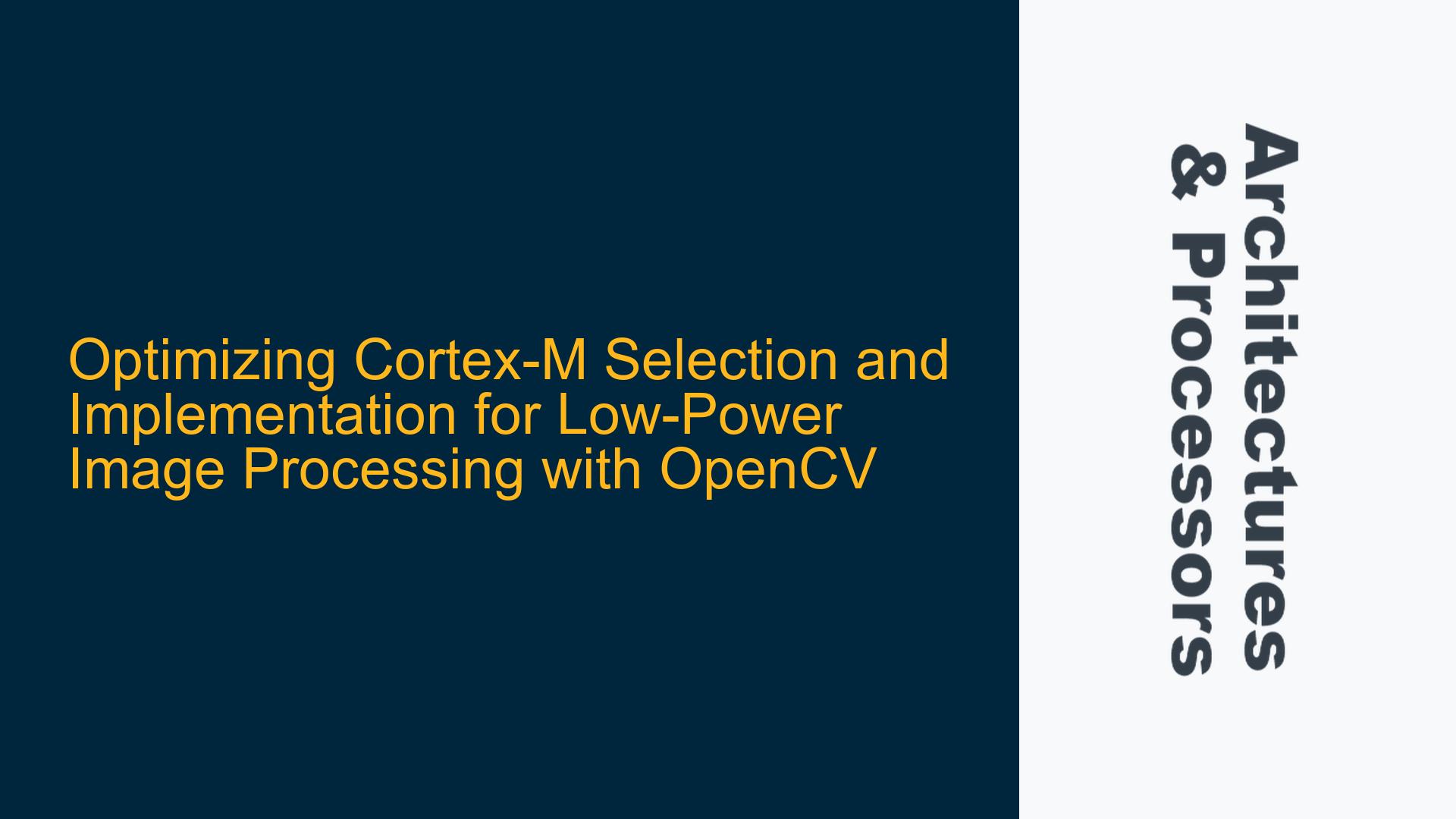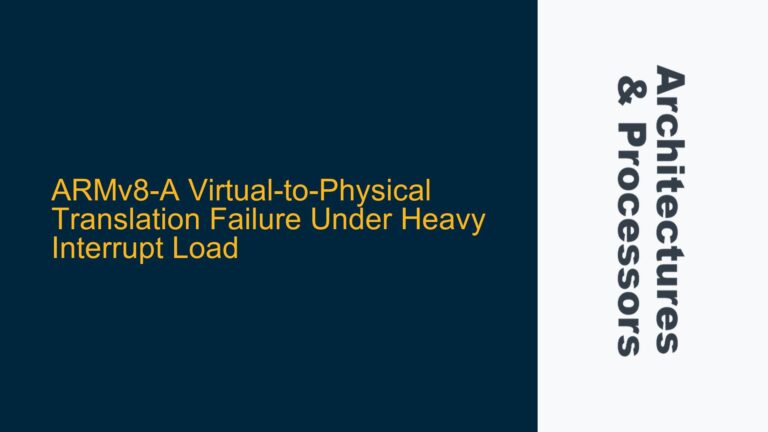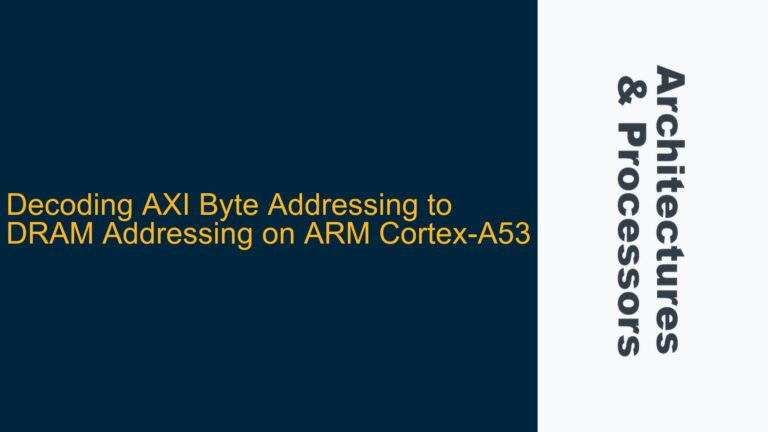Cortex-M Image Processing Challenges and Power Efficiency Requirements
When implementing image processing tasks on Cortex-M microcontrollers, particularly with OpenCV, the primary challenges revolve around balancing computational demands with power efficiency. Cortex-M processors, while highly efficient for embedded applications, are not traditionally designed for heavy computational workloads like image processing. OpenCV, a library optimized for high-performance computing, typically runs on more powerful processors such as Cortex-A series or x86 architectures. However, with careful selection of the Cortex-M variant and optimization techniques, it is possible to achieve functional image processing on these low-power devices.
The Cortex-M family, including the M0, M3, M4, and M7, offers a range of performance and power consumption profiles. The M0 and M0+ are the most power-efficient but lack the computational horsepower for intensive tasks. The M4 and M7, with their DSP extensions and optional floating-point units (FPUs), are better suited for image processing but consume more power. The key is to select a Cortex-M processor that provides just enough performance for the required image processing tasks while minimizing power consumption.
Power efficiency in Cortex-M processors is influenced by several factors, including clock speed, active peripherals, and the efficiency of the software implementation. Lowering the clock speed reduces power consumption but also decreases performance. Therefore, it is crucial to find the optimal clock speed that meets the performance requirements without excessive power usage. Additionally, peripherals such as DMA controllers, timers, and communication interfaces can significantly impact power consumption. Efficient use of these peripherals, along with power management features like sleep modes, can further enhance power efficiency.
Cortex-M Selection Criteria for OpenCV-Based Image Processing
Selecting the appropriate Cortex-M processor for OpenCV-based image processing involves evaluating several criteria, including computational performance, memory resources, and power consumption. The Cortex-M4 and M7 are the most suitable candidates due to their DSP extensions and optional FPUs, which are beneficial for image processing algorithms. The M4, with its balance of performance and power efficiency, is often the preferred choice for low-power applications. The M7, while more powerful, may be overkill for simpler image processing tasks and could lead to unnecessary power consumption.
Memory resources are another critical factor. Image processing algorithms, especially those involving OpenCV, require significant amounts of memory for storing images and intermediate results. The Cortex-M4 and M7 typically offer larger SRAM and Flash memory compared to the M0 and M3, making them more suitable for these tasks. However, the increased memory also leads to higher power consumption, so it is essential to select a processor with just enough memory to meet the application’s requirements.
Power consumption is a primary concern for battery-operated devices. The Cortex-M0 and M0+ are the most power-efficient but may not provide sufficient performance for image processing. The M4 and M7, while more power-hungry, can be optimized for low-power operation through careful clock speed management and efficient use of peripherals. Additionally, leveraging low-power modes, such as sleep and deep sleep, can significantly reduce power consumption during idle periods.
Implementing OpenCV on Cortex-M: Optimization Techniques and Best Practices
Implementing OpenCV on Cortex-M processors requires a combination of hardware selection, software optimization, and efficient use of peripherals. The first step is to select a Cortex-M processor that provides the necessary performance and memory resources while minimizing power consumption. The Cortex-M4 is often the best choice due to its balance of performance and power efficiency.
Once the processor is selected, the next step is to optimize the software implementation. OpenCV is a computationally intensive library, and many of its functions may not be directly applicable to Cortex-M processors. Therefore, it is essential to identify the specific image processing tasks required and implement optimized versions of these tasks. This may involve rewriting OpenCV functions in C or assembly language to take advantage of the Cortex-M’s DSP extensions and FPU.
Efficient use of peripherals is also crucial for optimizing power consumption. DMA controllers can be used to offload data transfer tasks from the CPU, reducing power consumption and freeing up CPU cycles for image processing. Timers and communication interfaces should be used judiciously to minimize their impact on power consumption. Additionally, leveraging low-power modes, such as sleep and deep sleep, can significantly reduce power consumption during idle periods.
In conclusion, implementing OpenCV-based image processing on Cortex-M processors is challenging but achievable with careful selection of the processor and optimization of the software implementation. The Cortex-M4 is often the best choice due to its balance of performance and power efficiency. By optimizing the software implementation and efficiently using peripherals, it is possible to achieve functional image processing on these low-power devices while minimizing power consumption.






